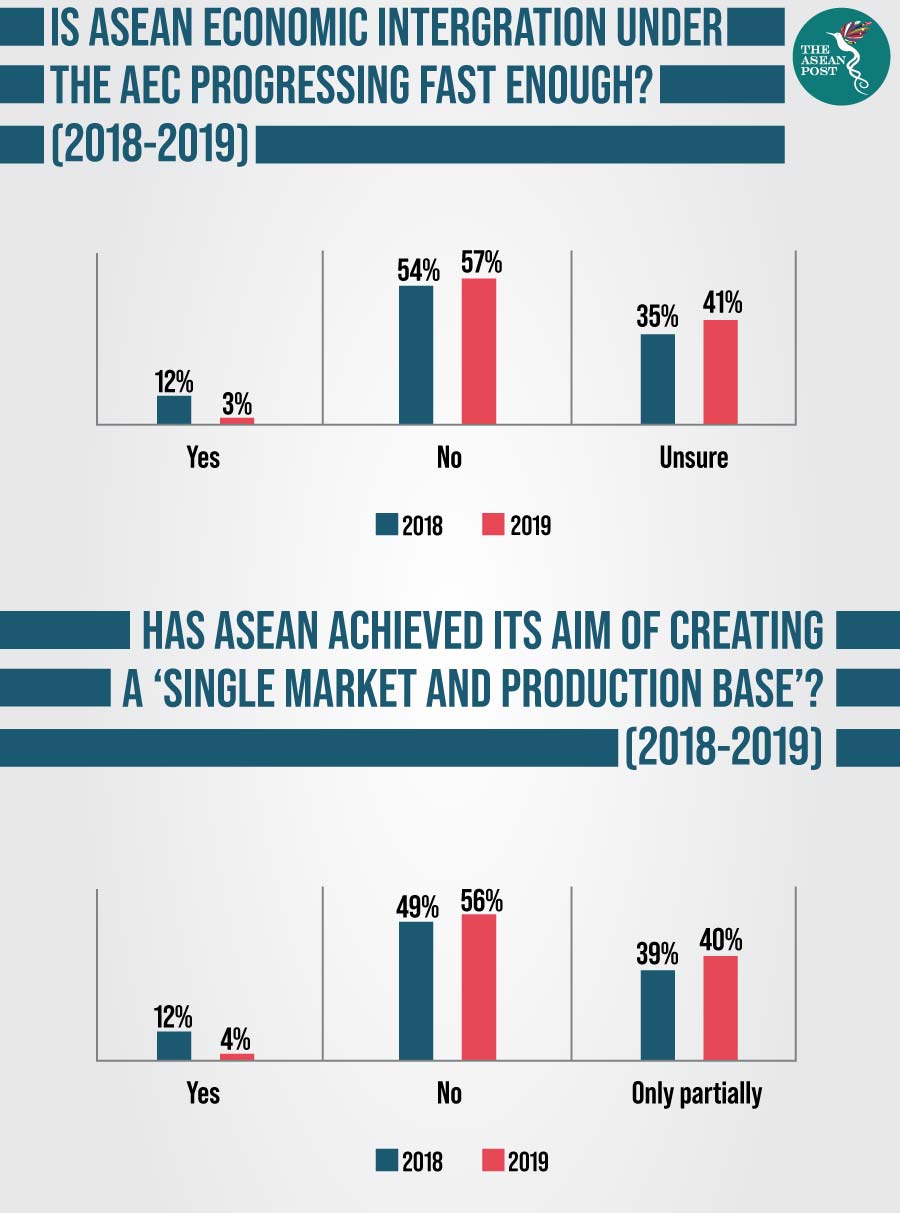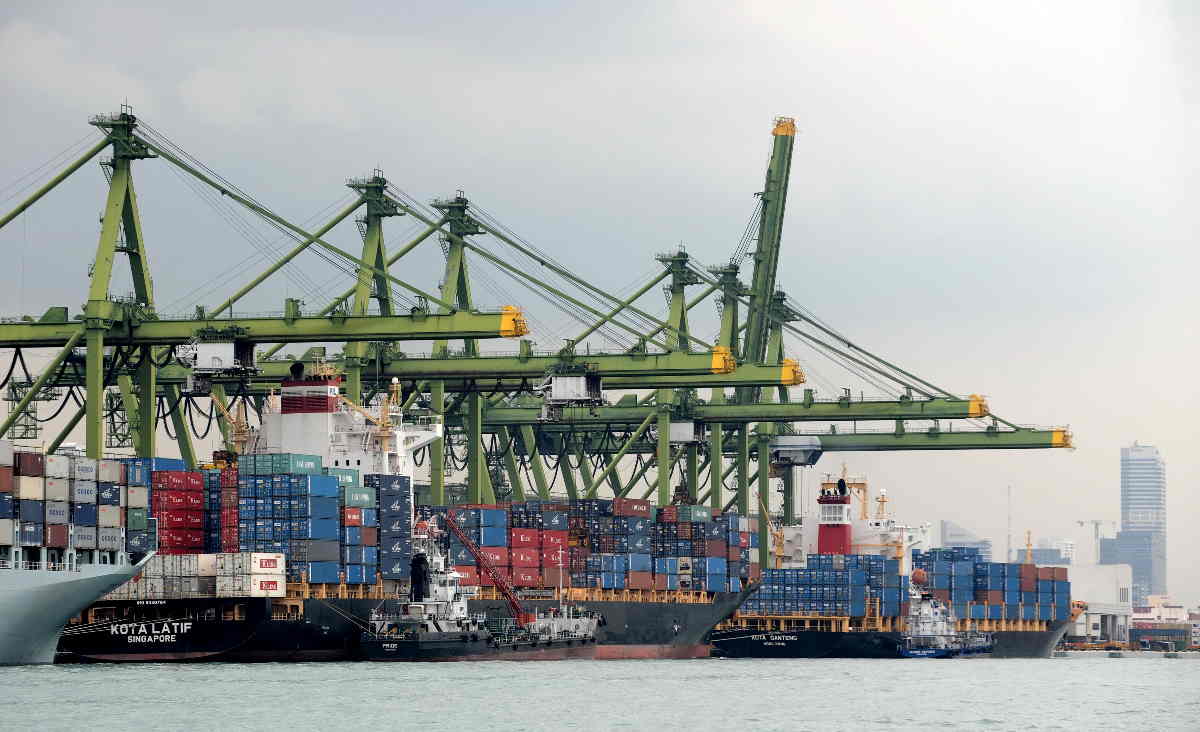While European businesses are increasingly more confident about investing in ASEAN, the ASEAN Economic Community (AEC) is creating uncertainty for some business prospects according to a recent survey by the EU-ASEAN Business Council.
Released on Monday, the EU-ASEAN Business Sentiment Survey – which polls European firms in the region – found that 88 percent of respondents expect to increase trade and investment in ASEAN in the next five years, up from 75 percent in 2018.
73 percent expect their ASEAN profits to increase, and the region is seen to possess the best economic opportunity in the next five years, with the percentage of those believing so standing at 53 percent – almost twice that of the next most popular region, China (27 percent).
However, scepticism about the AEC – which aims to integrate ASEAN’s 10 economies into one – has dampened business sentiments among the respondents.
Established in December 2015, the AEC is aimed at achieving a single market and production base, which would facilitate the seamless movement of goods, services, investment, capital, and skilled labour within ASEAN.
Only three percent of respondents said that economic integration under the AEC is progressing fast enough compared to 11 percent last year. And when asked whether ASEAN has achieved its aim of creating a single market and production base, only four percent agreed – compared to 12 percent last year.
Worryingly, 46 percent of respondents are uncertain about the impact of the AEC on their businesses – up from 35 percent last year.

Simplification of customs procedures for intra-ASEAN movement of goods, the removal of Non-Tariff Barriers (NTB) to trade and the harmonisation of standards and regulations – all among the key objectives of the AEC – were outlined as the main areas in which ASEAN has been slow at demonstrating clear progress compared to the objectives set out in the AEC Blueprints (2015 and 2025).
“Unless ASEAN moves faster on its integration efforts, especially removal of NTBs and harmonisation of standards, it risks being seen as just a ‘sum of the parts’ of the 10 countries and not capturing the synergies and greater economic and development benefits that an integrated community can bring,” said Donald Kanak, Chairman of the EU-ASEAN Business Council.
Is ASEAN Ready For The AEC?
While ASEAN continuously promotes the AEC as an integrated market which benefits the whole region, and there have been certain successful measures such as the elimination of intra-ASEAN tariffs, true economic integration has yet to be achieved.
“There is a lot of political rhetoric involved when it comes to the AEC, and ASEAN members are always upbeat about the progress they have made and level of integration they have already achieved,” said Dr Jorn Dosch, Professor of International Politics and Development Cooperation at the University of Rostock, Germany.
“On the other hand, you have businesses and external stakeholders interested in intensifying relations with ASEAN – like the European Union, United States and Australia – who are worried that the real level of implementation is not as high as claimed,” he said in report published last December on Monash University’s (Malaysia Campus) website, where he was previously the Head of the School of Arts and Social Sciences.
With the support of the CIMB ASEAN Research Centre (CARI), Dr Dosch and his team conducted research on the status of regional economic integration and found that member states have not implemented what they have agreed on, with Dr Dosch identifying distrust stemming from a strong sense of nationalism and the disparity in terms of economic development between member states as among the reasons the AEC has been stalling.
An assessment by Malaysian think-tank Institute for Democracy and Economic Affairs (IDEAS) last December suggests that in many areas, implementation of AEC 2025 is behind schedule.
Across all characteristics, there remain at least some actions scheduled for completion last year for which there was no publicly available evidence of significant progress. Perhaps unsurprisingly, the most complicated characteristic with the highest number of associated measures, “Characteristic A - Highly Integrated and Cohesive Economy”, is the most behind schedule with less than 30 percent of measures on schedule according to publicly available information.
Across trade, investment, migration and tourism, IDEAS found that the intra-ASEAN share of cross border economic activity is either stagnant or declining slightly.
“Everyone knows ASEAN is not really ready for such a high level of economic integration. So the question is why is ASEAN making everyone pretend they can achieve that?,” asked Dr Dosch, who has served as an evaluator and consultant on ASEAN issues for the European Union, the German government, the United Nations and other organisations.
“ASEAN needs to say that maybe they have been too ambitious, and they need a longer time frame to implement all their regulations. They need to concentrate on the more realistic goals.”
Related Articles:
